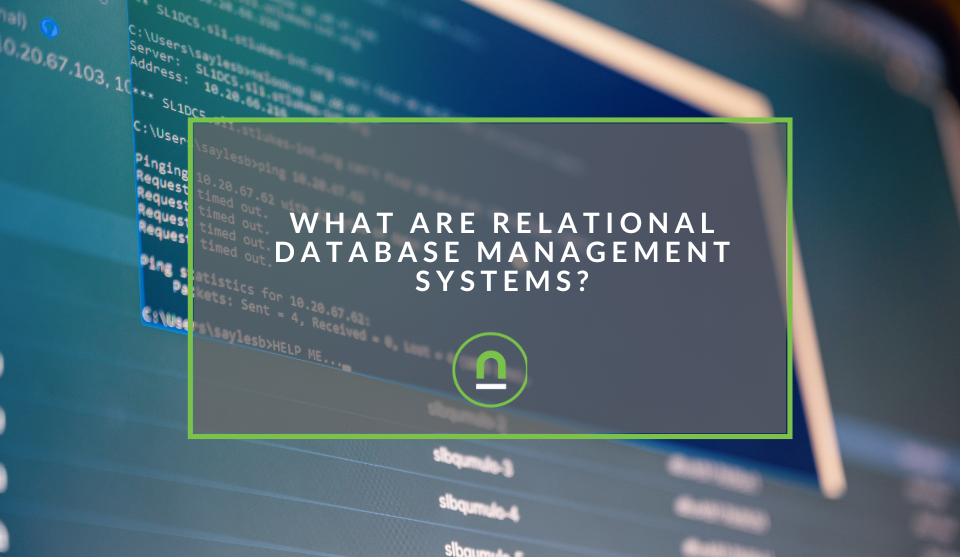Recent posts

Money Talks
Everything You Need to Know About SASSA Status Check
13 April 2025

Mind, Body & Soul
The Genetic Diversity of Cannabis Seeds
12 April 2025

Money Talks
How Small Businesses Can Leverage Blockchain Technology
02 April 2025

Industry Experts
Mastering Personalization in Digital Marketing
31 March 2025
Popular posts
Extravaganza
Trending Music Hashtags To Get Your Posts Noticed
24 August 2018
Geek Chic
How To Fix iPhone/iPad Only Charging In Certain Positions
05 July 2020
Extravaganza
Trending Wedding Hashtags To Get Your Posts Noticed
18 September 2018
Money Talks
How To Find Coupons & Vouchers Online In South Africa
28 March 2019
What Does Your Direct Traffic Actually Consist of
10 March 2019 | 0 comments | Posted by Che Kohler in nichemarket Advice
During my time as a digital marketer, one of the aspects of the discipline I enjoy the most is analysing data, mapping out patterns and sourcing insights for future improvements or changes in strategy. Google Analytics has helped make website data easy to understand and analyse when looking at channel performance one channel that often gets little or no thought to it, which is direct traffic.
I know very few marketers or webmasters who even bother to take a look at the direct traffic report unless there is some spike or drop in the numbers. Websites often feel they do not influence direct, and it's a brand metric so why bother looking at it?
The misconceptions of direct traffic
When it comes to direct traffic in Analytics, there are two deeply entrenched misconceptions. The first is that it’s caused almost exclusively by users typing an address into their browser (or clicking on a bookmark). The second is since you cannot directly influence it, it’s somehow immune to further analysis and improvement.
Dismissing direct without a second thought often leaves brands losing out on valuable data that could be used to improve their marketing efforts. To analyse direct traffic effectively, you first need to realise what it is, what it consists of and how to clean it out before you start to review the actual performance of the channel.
What is direct traffic?
Google Analytics will report a traffic source of "direct" when it has no data on how the session arrived at your website, or when the referring source has been configured to be ignored. You can think of direct as a catchment channel and GA’s fall-back option for when its processing logic has failed to attribute a session to a particular source.
What causes direct traffic?
If direct is a grouping of uncategorised channels, what are the situations in which a session be attributed to direct? Let's take a look and see, shall we?
1. Manual address entry and bookmarks
As we all understand it, the direct-traffic scenario is largely unavoidable one but a great indication of your usefulness to a user. If a user types a URL into their browser’s address bar or clicks on a browser bookmark, that session will appear as direct traffic. Simple as that, the more users doing that, the better your brand, application or information must be that users would prefer your site over others or even bothering with search engines.
2. HTTPS > HTTP
When a user follows a link on a secure (HTTPS) page to a non-secure (HTTP) page, no referrer data is passed, meaning the session appears as direct traffic instead of as a referral. Note that this is intended behaviour. It’s part of how the secure protocol was designed, and it does not affect other scenarios: HTTP to HTTP, HTTPS to HTTPS, and even HTTP to HTTPS all pass referrer data.
If your referral traffic has tanked, but direct has spiked, it could be that one of your major referrers has migrated to HTTPS. The inverse is also true: If you’ve migrated to HTTPS and are linking to HTTP websites, the traffic you’re driving to them will appear in their Analytics as direct.
How to fix this
If your referrers have moved to HTTPS and you’re stuck on HTTP, you really ought to consider migrating to HTTPS as it will bring back any referrer data which is removed from cross-protocol traffic.
This scenario will become more popular since Google has stated that HTTPS is now a ranking factor. If you're not yet running on HTTPS check out our guide on how to migrate to HTTPS here. Remember, HTTPS and HTTP/2 are the future of the web.
3. Missing or broken tracking code
If you're making use of subdomains or multiple domains this can easily corrupt your traffic especially if your domain is on the referral exclusion list (as per default configuration), the session is categorised as direct. To prevent it from happening again, carry out a thorough Analytics audit, move to a GTM-based tracking implementation, and promote a culture of data-driven marketing.
How to fix this
As a short-term fix, you can try to repair the damage by merely adding cross-domain tracking or set up your subdomain tracking correctly. Make sure your GTM and GA are appropriately configured to best practices or your sites specific needs. Also, ensure all external channels such as social media, email, affiliates, paid search display and remarketing are all tagged correctly with UTM tracking
4. Improper redirection
I don't understand why websites even have this problem, but unfortunately, not everyone realises when and how to use redirects. Don’t use meta refreshes or JavaScript-based redirects as these can wipe or replace referrer data, leading to direct traffic in Analytics. You should also be meticulous with your server-side redirects, and audit your redirect file frequently.
How to fix this
If you don't implement your redirects correctly, you could create complex redirect chains are more likely to result in a loss of referrer data, and you run the risk of UTM parameters getting stripped out. Try to update your URLs where possible and do not use the old path if you can help it. Also, make sure you map out and test your redirects and ensure you only use 301 server-side redirects.
5. Non-web documents
If you distribute attachments like Microsoft Word documents, slide decks, or PDFs that contain links back to your site, by design these mediums do not pass referrer information.
How to fix this
When you publish whitepapers or offer downloadable PDF guides, you should be tagging these files with embedded hyperlinks with UTM campaign tracking. When creating links you may display the anchor text or link view you desire on the front end but the actual link can be one tagged with UTM tracking or a shorted link that was UTM tracking built into it.
6. “Dark social”
Social media and instant messaging impact are far bigger than most marketers realise and since this is a user-generated action, we have very little control over how this traffic is tracked.The term “dark social” was first coined back in 2012 by Alexis Madrigal in an article for The Atlantic.
Dark social refers to methods of social sharing which cannot easily be attributed to a particular source, like email, instant messaging, Skype, WhatsApp, and Facebook Messenger. Recent studies have suggested that upwards of 80% of consumers’ outbound sharing from publishers’ and marketers’ websites now occurs via these private channels.
How to fix this
Unfortunately, there is no real way to track dark social since often it's done when a user grabs the URL in a browser and shares the link on one of these instant messaging applications. You can, however, provide a convenient and properly configured sharing buttons on your content which encourages users to share the link via your tracked links instead which will go some way to reducing the amount of untracked dark social traffic.
7. Non-refferer links
Some sites link off to your content but do not want to to be known as a referer which is a personal or business preference off theirs. When linking to an external site, these sites use the rel="noreferrer" on anchor link tags which removes information from being passed on to the referred website. This means the traffic from sites with this option will be attributed to direct in your analytics account.
Go direct to the source
Once you've started to clear out your direct traffic and realise some of the data needs to be taken into context you'll be able to use it as a metric to gauge brand loyalty and brand preference. Direct traffic from dark social can also be helpful in gauging what content users are distributing and give you insights into the type of content that proves popular so you can amplify these pieces on your traditional social media or email efforts.
List your business for FREE
Don't have a place to send your traffic? Create your free business listing on nichemarket. The more information you provide about your business, the easier it will be for your customers to find you online. If you require a more detailed guide on how to create your profile or your listing, then we highly recommend you check out the following articles.
Contact us
If you want to know more about website tracking for your business, don’t be shy we’re happy to assist. Simply contact us
Tags: marketing , websites, data analytics , google analytics
You might also like
Mastering Personalization in Digital Marketing
31 March 2025
Posted by Željka Ristic in Industry Experts
We look at the best content marketing tools to boost engagement and growth and build sustainable marketing campaigns that drive users to take action
Read moreWhat Are Relational Database Management Systems?
28 March 2025
Posted by Che Kohler in nichemarket Advice
Learn what relational database management systems are, how they organize data using tables and relationships, and why they remain essential for busin...
Read more{{comment.sUserName}}
{{comment.iDayLastEdit}} day ago
{{comment.iDayLastEdit}} days ago
 {{blogcategory.sCategoryName}}
{{blogcategory.sCategoryName}}

